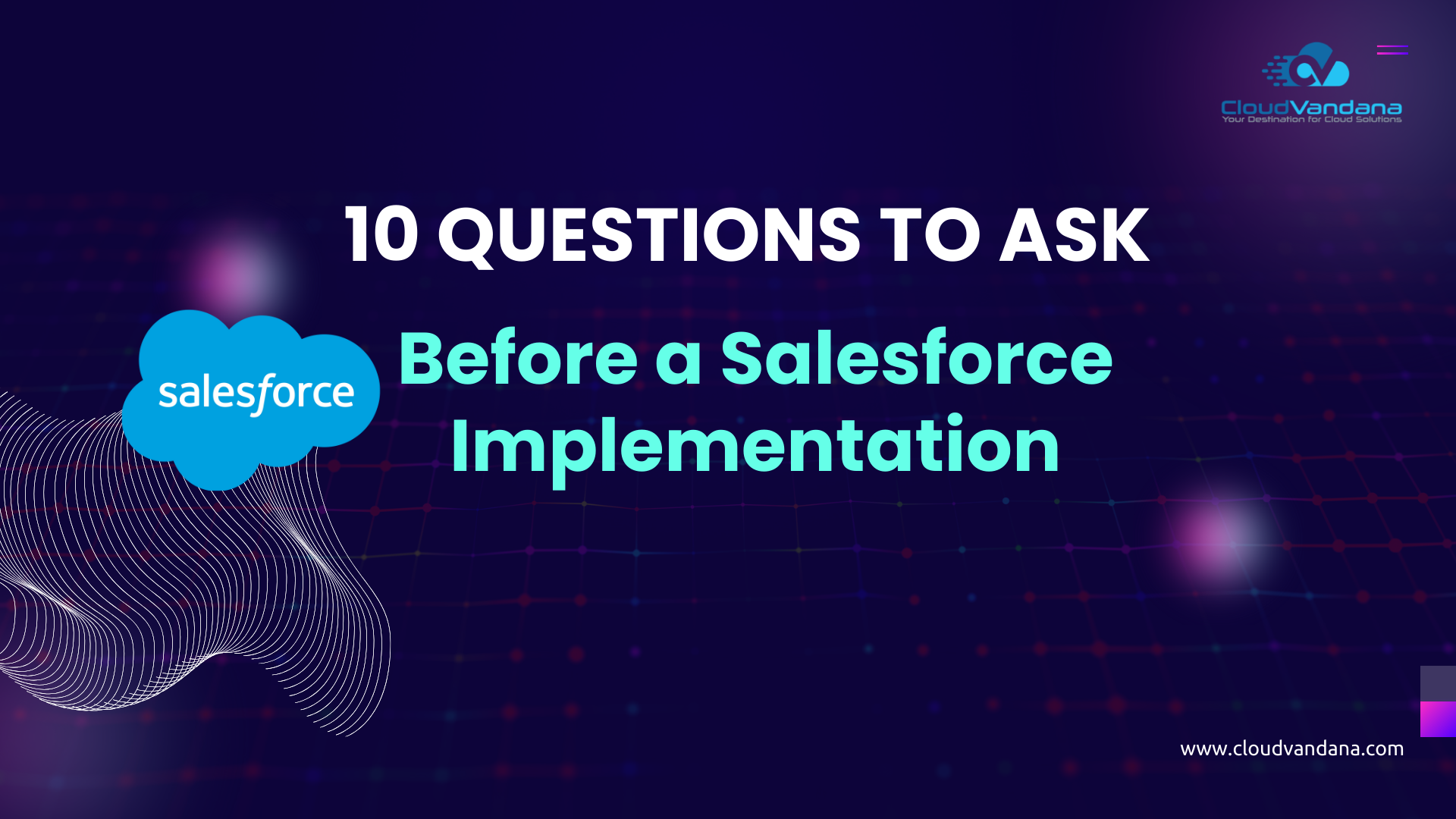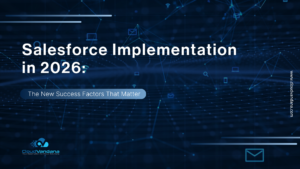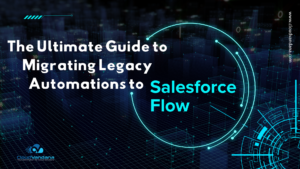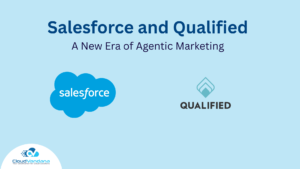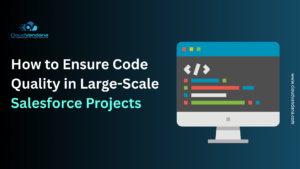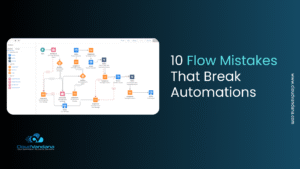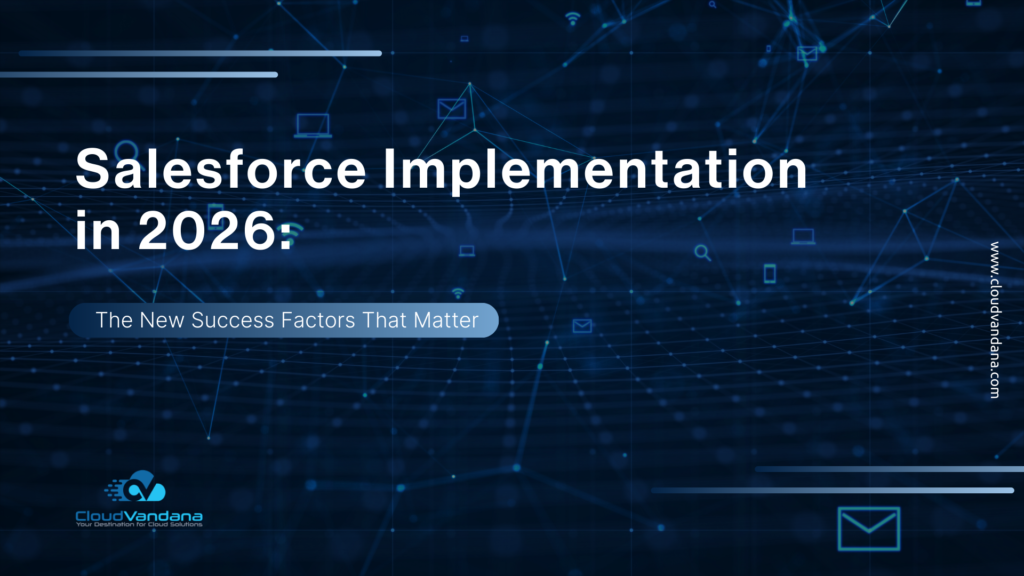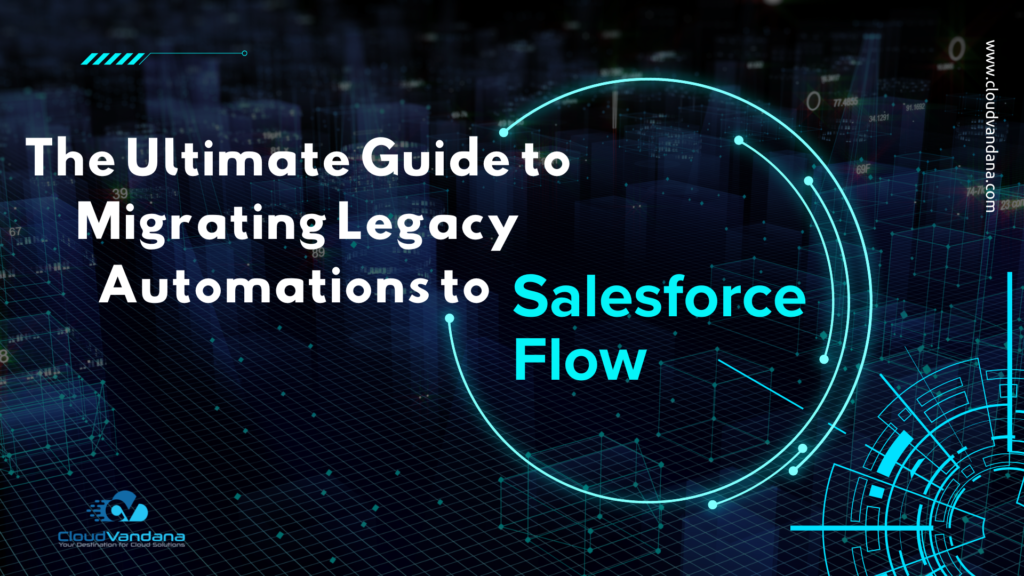Introduction: Why Asking the Right Questions Matters
Planning a Salesforce implementation? Discover 10 essential questions to ask before you begin. Learn how to define business goals, manage data, budget effectively, and drive adoption with expert tips and insights. Start your Salesforce journey the right way.
Salesforce is the world’s #1 CRM, but let’s face it—implementations don’t always succeed. According to a Forrester Research report, nearly 50% of CRM projects fail to meet expectations due to poor planning and lack of alignment with business goals. What’s striking is that these failures rarely happen because the technology is flawed. Instead, they occur because organizations rush into the process without asking the tough questions that shape a roadmap for success.
Marc Benioff, Salesforce’s co-founder and CEO, once said: “The only constant in the technology industry is change.” That statement is particularly true for CRM adoption. Salesforce is not a one-time setup; it’s a living platform that evolves with your business. Without the right preparation, even the most well-funded implementation can turn into an expensive, underutilized system.
That’s why before you start your Salesforce journey, you need to pause and ask the right questions. The following ten aren’t just theoretical—they are the questions that separate success stories from stalled projects.
Table of Contents
- Introduction: Why Asking the Right Questions Matters
- Question 1: What Are Our Business Objectives?
- Question 2: Who Are the Stakeholders and Decision-Makers?
- Question 3: Do We Have a Clear Data Strategy?
- Question 4: Should We Customize or Configure?
- Question 5: What Integrations Are Needed?
- Question 6: What Is Our Change Management Plan?
- Question 7: What Budget and Resources Are Required?
- Question 8: What Is Our Timeline—and Is It Realistic?
- Question 9: Who Will Be Our Salesforce Partner?
- Question 10: How Will We Measure Success?
- Conclusion: Your Salesforce Success Starts with the Right Questions
- Frequently Asked Questions (FAQs)
- YOU MIGHT ALSO LIKE
Question 1: What Are Our Business Objectives?
Every Salesforce implementation should begin not with the technology, but with clarity of purpose. Ask yourself: Why are we investing in Salesforce at all?
Too often, organizations adopt Salesforce simply because it’s the market leader or because competitors use it. While that reasoning may sound safe, it’s a trap. Without clear objectives, even the most advanced CRM quickly becomes an expensive database that no one fully utilizes.
Think of Salesforce as a vehicle. Buying a Ferrari doesn’t automatically make you a better driver—it only pays off if you know where you want to go, how to drive it, and why that journey matters. Similarly, Salesforce’s capabilities only matter when they’re connected to strategic business goals.
According to Gartner: “Technology implementations fail when organizations focus on the tool rather than the outcomes.” This means Salesforce should not be viewed as the end goal but as a strategic enabler that supports your company’s broader vision.
What business problems do you want Salesforce to solve?
Instead of thinking in terms of features, frame your objectives in terms of pain points:
- Is your sales team struggling to get real-time pipeline visibility?
- Do customer service reps lack a single view of customer interactions?
- Are manual processes slowing down lead nurturing and follow-ups?
By pinpointing pain points, you ensure Salesforce is tailored to solve real problems rather than becoming a shiny but underused tool.
How will this impact revenue, customer retention, or efficiency?
Not all objectives are equal. Some improve the bottom line directly (e.g., boosting upsell revenue), while others create indirect value through efficiency and customer satisfaction. For example:
- Automating lead scoring may not immediately increase revenue, but it speeds up sales cycles.
- Providing agents with a 360-degree customer view may not reduce costs directly, but it improves customer satisfaction and retention rates.
When defining objectives, connect them to tangible outcomes that leadership understands—growth, savings, and loyalty.
How will we measure progress against these goals?
A vague objective like “We want better sales performance” is dangerous because it’s impossible to measure. Instead, apply the SMART framework (Specific, Measurable, Achievable, Relevant, Time-bound):
- ❌ Bad objective: “Close more deals.”
- ✅ Strong objective: “Increase closed-won opportunities by 15% in the next 12 months.”
By setting measurable KPIs—such as case resolution times, lead-to-opportunity conversion rates, or customer Net Promoter Scores—you transform Salesforce into a performance engine rather than a passive record-keeping system.
Expert Insight
Salesforce’s Chief Marketing Evangelist, Mathew Sweezey, once said: “Technology doesn’t transform businesses. Business models do. Technology only amplifies the direction you’ve already chosen.” This reinforces the idea that your Salesforce implementation should be the amplifier of a strategy, not the strategy itself.
💡 Pro Tip: Don’t settle for vague goals like “better sales.” Instead, make them measurable: “Increase qualified leads by 30%” or “Reduce case resolution times by 25%.”
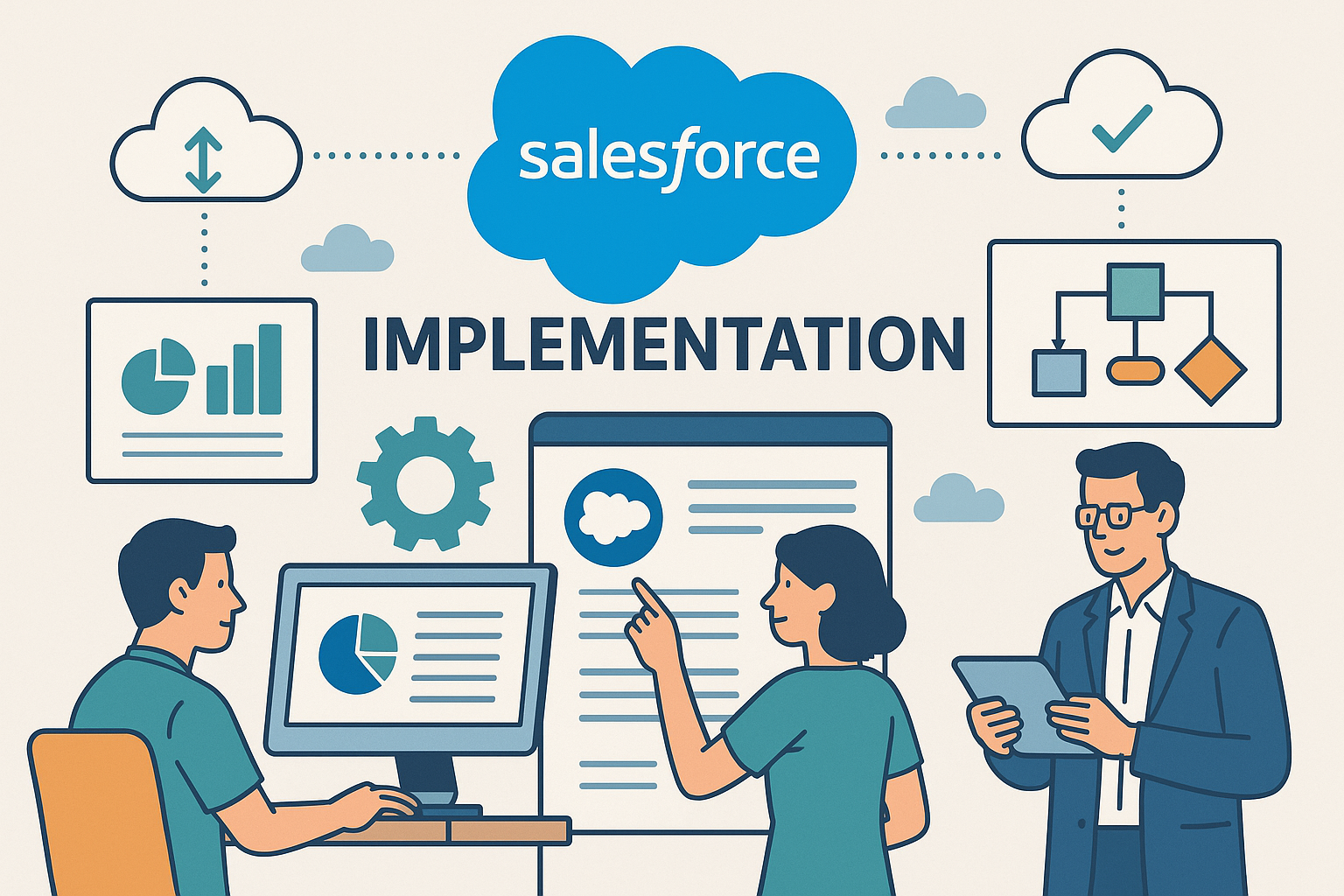
Question 2: Who Are the Stakeholders and Decision-Makers?
A Salesforce implementation is not just an IT project—it’s an organizational transformation. That means it impacts nearly every team, from sales and service to finance and marketing. Success depends on getting the right people involved at the right time.
One of the most common mistakes companies make is allowing only one group—like the IT department or the sales team—to drive the entire project. While both are important, they don’t represent the full picture. If Salesforce is designed only around technical requirements, it may miss practical business needs. On the other hand, if it’s designed only around sales, it might ignore how marketing, support, or finance use the system.
That’s why it’s crucial to bring in a mix of perspectives:
- Executives who define the vision and ensure alignment with business strategy.
- Managers who understand workflows and bottlenecks.
- Frontline users who know the day-to-day challenges and will ultimately decide whether Salesforce is adopted—or abandoned.
Salesforce MVP Geraldine Gray puts it well: “If your users don’t feel like they’ve been heard, they’ll find workarounds. And that undermines the system before it even gets off the ground.” In other words, if employees feel excluded from the design process, they’ll simply go back to spreadsheets, emails, or other tools instead of embracing Salesforce.
Key Considerations
When mapping out stakeholders, ask yourself:
- Who owns the Salesforce vision at the executive level? There needs to be a leader who champions the project and communicates why it matters.
- Who are the daily users, and how will their workflows change? The people entering data or resolving customer issues need to know that Salesforce will make their jobs easier—not harder.
- How will decision-making be balanced between technical and business needs? IT might care about security and integrations, while sales cares about dashboards and reports. Both perspectives need equal weight.
💡 Pro Tip: Establish a governance team early—consisting of executives, IT leaders, and end-users—to guide the project and prevent siloed decision-making.
Question 3: Do We Have a Clear Data Strategy?
Data is the lifeblood of Salesforce. The platform thrives on accurate, clean, and reliable information. But here’s the hard truth: garbage in, garbage out. If you migrate bad data into Salesforce, it doesn’t magically get better—it only becomes bad data in a new system. And when your team sees errors, duplicates, or outdated information, they’ll quickly lose trust in Salesforce and go back to spreadsheets or external tools.
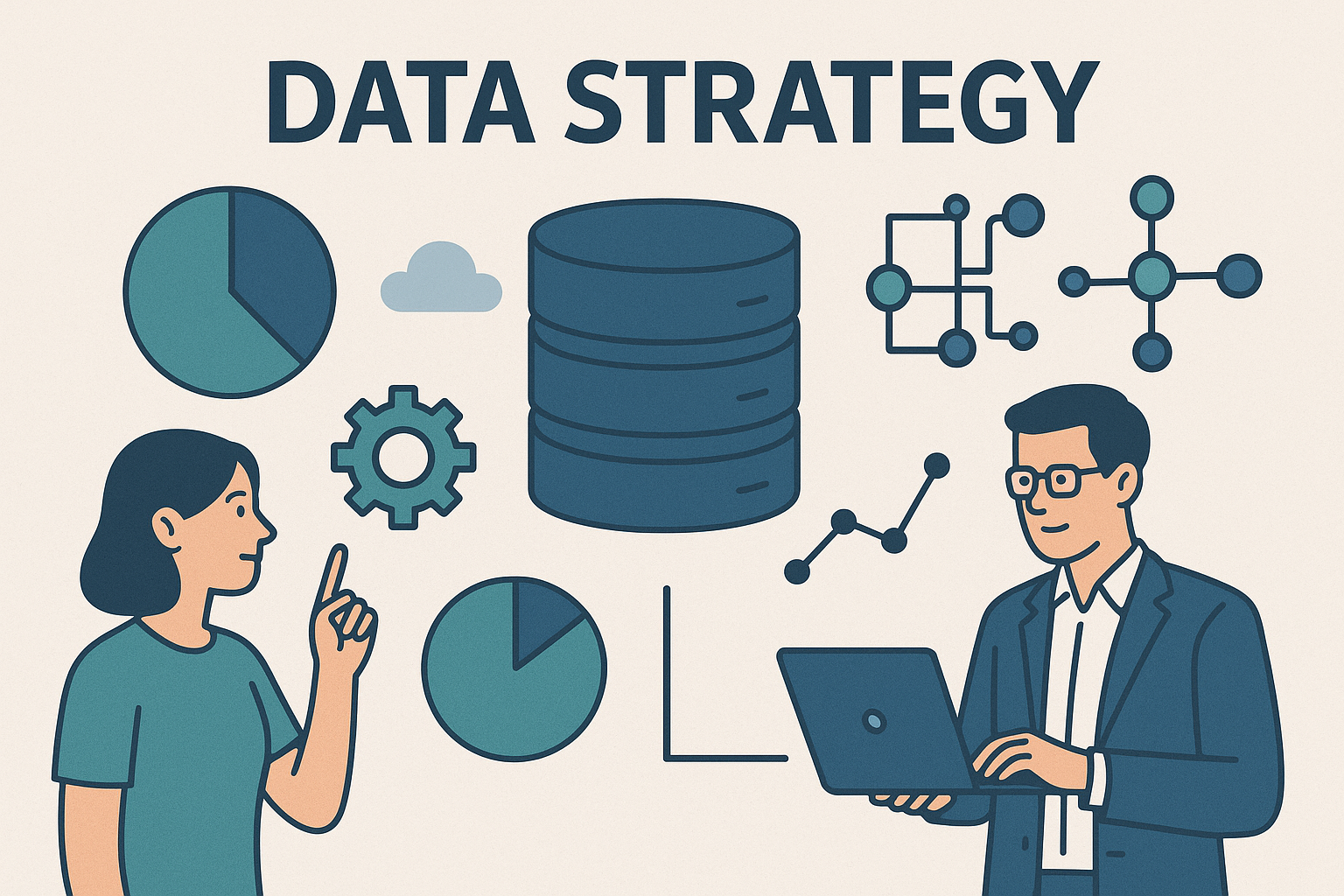
The consequences of poor data management aren’t small. IBM estimates that bad data costs U.S. businesses $3.1 trillion annually—through lost productivity, inaccurate insights, and failed decision-making. That’s why, before you even think about going live with Salesforce, you need a data strategy.
Steps to Take Before Implementation
- Audit your existing data sources
Start by reviewing where your customer data currently lives—spreadsheets, old CRMs, ERPs, or marketing systems. Identify overlaps, inconsistencies, and gaps. - Identify duplicates, inaccuracies, and outdated records
If your database is full of outdated contacts or duplicate accounts, Salesforce will amplify those problems. Imagine sending the same marketing email twice to one customer—it’s unprofessional and damages credibility. - Define governance policies
Decide early who owns which data fields, who can edit records, and how often cleanup should happen. Clear rules around data entry and validation prevent Salesforce from becoming cluttered.
Salesforce expert David Taber warns: “Most CRM disasters are caused not by the software, but by poor data management practices.” In other words, Salesforce itself isn’t the problem—bad data is.
Why This Matters for Success
Clean data ensures:
- Accurate reporting: Dashboards show the real state of your pipeline.
- Better customer experiences: Service reps can see up-to-date interactions.
- Higher adoption: Users trust the system, so they rely on it daily.
Salesforce expert David Taber warns: “Most CRM disasters are caused not by the software, but by poor data management practices.”
💡 Pro Tip: Implement validation rules and mandatory fields from the beginning to ensure consistent, accurate data entry.
Question 4: Should We Customize or Configure?
Salesforce is known for its flexibility. You can configure it with clicks (no code) or customize it with code (Apex, Lightning Components). But here’s the catch: over-customization is the silent killer of scalability.
Configurable features like Process Builder, Flow, and Lightning App Builder cover 80–90% of business needs. Custom code should be reserved for truly unique requirements.
Salesforce architect Mike Gerholdt advises: “Don’t code what you can click. Every line of code is technical debt you’ll carry into future releases.”
Ask yourself:
- Is this requirement achievable with out-of-the-box features?
- Will custom code complicate upgrades or increase costs?
- Can we use AppExchange solutions instead of reinventing the wheel?
💡 Pro Tip: Prioritize configuration first. Only customize when it delivers a competitive advantage.
Question 5: What Integrations Are Needed?
Rarely does Salesforce operate as a standalone tool. In most organizations, it’s the hub that connects everything else—from ERP systems and finance software to marketing automation platforms, customer support tools, and industry-specific applications. That’s where its real power lies: Salesforce becomes the central nervous system of your business.
But here’s the risk: if integrations are not planned properly, you end up with data silos, duplicated processes, and frustrated employees who can’t rely on the system for a single source of truth. Instead of helping, Salesforce becomes just another disconnected tool.
The scale of this problem is huge. According to the MuleSoft Connectivity Benchmark Report, 89% of IT leaders say integration challenges slow down digital transformation. That means most companies struggle to connect their systems in a way that feels seamless.
Key Questions to Ask About Integrations
- Which systems must share data with Salesforce?
Start by mapping out every system that touches your customers—ERP for billing, marketing automation for campaigns, support platforms for tickets, and even collaboration tools like Slack or Teams. Decide which of these need a two-way integration versus just a one-time sync. - Should integration be real-time or batch-based?
Not all data needs to flow instantly. For example, lead assignment might require real-time updates, while invoice history from an ERP could sync once a day. Choosing the right approach prevents system overload and keeps costs under control. - Who will own and monitor integration flows?
Integrations aren’t a “set it and forget it” exercise. Someone needs to monitor them, handle errors, and make adjustments as business processes evolve. Assign clear ownership—whether that’s an internal Salesforce admin, IT team, or your consulting partner.
Why Integrations Matter
Well-planned integrations ensure that:
- Sales reps see the full customer journey, from marketing campaigns to billing history.
- Support agents have context when handling tickets.
- Executives get accurate reports without stitching together multiple systems.
💡 Pro Tip: Start with the integrations that directly impact customer experience, such as syncing leads from marketing automation into Salesforce Sales Cloud.
Question 6: What Is Our Change Management Plan?
The biggest challenge in Salesforce projects isn’t technology—it’s people. Employees resist change when it feels imposed. That’s why successful implementations invest heavily in change management.
Brent Leary, a CRM industry analyst, puts it bluntly: “CRM failure is rarely about the software. It’s about adoption. If people don’t use it, it doesn’t matter how good it is.”
A strong change management plan includes:
- Transparent communication about the “why” behind Salesforce.
- Leadership champions who model adoption.
- Training programs tailored to roles.
- Continuous feedback loops to adjust features.
💡 Pro Tip: Use Salesforce Trailhead as part of your training strategy. It’s free, gamified, and designed to make learning fun.
Question 7: What Budget and Resources Are Required?
Buying Salesforce licenses is just the tip of the iceberg. Many first-time customers assume the license fee is the main cost, only to realize later that the total cost of ownership is much larger. A proper Salesforce budget needs to factor in not just the licenses, but also:
- Implementation services – designing, configuring, and rolling out the system.
- Custom development – when out-of-the-box features aren’t enough.
- Integrations – connecting Salesforce with your ERP, marketing, or support platforms.
- Training and adoption programs – to ensure people actually use Salesforce.
- Ongoing support – admin, maintenance, and enhancements after go-live.
Companies that fail to plan for these costs often run into “scope creep”—where requirements keep expanding mid-project. This can delay go-live, blow past budgets, and frustrate leadership.
Salesforce consultant Shivan Bindra explains it best: “A successful implementation costs less than a failed one. Skimping upfront often doubles your costs later.” In other words, trying to save money early—by skipping training, hiring inexperienced consultants, or underestimating integrations—usually backfires.
What to Include in Your Budget
- Account for both initial implementation and ongoing enhancements
Salesforce isn’t a one-time investment—it evolves with your business. Budget not only for the launch but also for upgrades, new features, and continuous optimization. - Plan for a dedicated Salesforce admin or managed services
Many organizations assume IT can “handle” Salesforce. But a trained Salesforce admin is critical for monitoring performance, fixing issues, and implementing improvements. If you can’t hire in-house, consider managed services from a trusted partner. - Budget for user training and adoption initiatives
The best system is useless if people don’t use it. Allocate resources for training sessions, onboarding materials, and even gamification through Trailhead to make adoption smoother.
Why This Matters
Without proper budgeting:
- Teams may cut corners on training, leading to low adoption.
- Integrations may be skipped, creating disconnected processes.
- Maintenance may be ignored, leaving Salesforce outdated within a year.
💡 Pro Tip: Think long-term. Treat Salesforce as an evolving platform, not a one-time project.
Question 8: What Is Our Timeline—and Is It Realistic?
It’s natural for organizations to want fast results. Leaders want to see ROI quickly, teams want tools in their hands, and IT wants to deliver on expectations. But here’s the reality: rushing a Salesforce implementation is one of the fastest ways to guarantee failure.
A “big bang” approach—where everything is rolled out at once—sounds appealing but often leads to missed requirements, overwhelmed users, and system instability. By contrast, a phased rollout—starting small with core features, then expanding—sets you up for steady wins and long-term adoption.
Even Salesforce itself emphasizes this approach. The Salesforce Success Guide recommends: “Implement in waves. Start small, win fast, and expand.” In practice, this means breaking your project into manageable phases:
- Phase 1: Core features (like lead management, opportunity tracking, or case management).
- Phase 2: Integrations with ERP, marketing, or support tools.
- Phase 3: Advanced automation, analytics, or AI capabilities.
Key Timeline Questions to Ask
- What are the must-have features for phase one?
Define your minimum viable implementation. Focus on features that deliver immediate business value—like pipeline visibility for sales or customer history for service. Everything else can come later. - How long will data migration and user training take?
These steps are often underestimated. Migrating clean, accurate data takes time. Training users to adopt new workflows can take even longer. Cutting corners here leads to poor adoption. - Do we have enough internal resources for testing?
Testing isn’t glamorous, but it’s essential. Your internal teams need time to validate workflows, check integrations, and confirm the system supports real-world scenarios before going live.
Why Phasing Matters
A phased timeline gives you:
- Quick wins that build user confidence.
- Time to adjust based on feedback.
- Reduced risk of overwhelming your teams.
💡 Pro Tip: Build buffers into your timeline. Unexpected complexities always arise during data migration and integrations.
Question 9: Who Will Be Our Salesforce Partner?
Choosing the right consulting partner can make or break your project. Not all partners are created equal—some specialize in industries, others in technical complexity.
Look for:
- Salesforce certifications (Crest or Summit-level partners).
- Proven methodologies and case studies.
- Industry-specific experience.
CloudVandana, for example, brings certified Salesforce expertise, industry-tailored solutions, and end-to-end implementation services. By choosing a seasoned partner, you avoid reinventing the wheel and ensure your implementation follows best practices.
💡 Pro Tip: Ask potential partners for references and examples of measurable results, not just logos.
Question 10: How Will We Measure Success?
If you don’t define success upfront, you won’t know if Salesforce is delivering value. KPIs should go beyond “system is live.”
Consider metrics like:
- User adoption rates.
- Sales cycle length reduction.
- Customer satisfaction improvements.
- Revenue impact from pipeline visibility.
Salesforce VP Taksina Eammano explains: “The true ROI of Salesforce comes not from features, but from the behavioral changes it enables.”
💡 Pro Tip: Set benchmarks before go-live. Then measure progress at 30, 60, and 90 days.
Conclusion: Your Salesforce Success Starts with the Right Questions
A Salesforce implementation is more than a technology project—it’s a business transformation initiative. By asking these ten questions upfront, you lay the groundwork for long-term success.
From defining business goals to ensuring adoption, each question helps avoid costly pitfalls and maximize ROI. As Marc Andreessen once said: “In a startup, absolutely nothing happens unless you make it happen.” The same is true for Salesforce: success isn’t accidental—it’s intentional.
At CloudVandana, we’ve guided countless businesses through Salesforce implementations that drive measurable growth. Whether you’re preparing for your first rollout or expanding to new clouds, our team ensures you don’t just install Salesforce—you transform with it.
👉 Ready to start your Salesforce journey the right way? Explore CloudVandana’s Salesforce Implementation Services today.
Frequently Asked Questions (FAQs)
1. Why is it important to define business objectives before a Salesforce implementation?
Because Salesforce is a tool, not a strategy. Clear objectives ensure that the system solves real business problems, aligns with company goals, and delivers measurable ROI.
2. Who should be involved in planning a Salesforce implementation?
It’s not just IT. Executives, managers, and frontline users from sales, service, marketing, and finance should all play a role. Broad involvement prevents siloed decisions and drives higher adoption.
3. How do we prepare our data before migrating to Salesforce?
Start with a data audit. Identify duplicates, outdated records, and inaccuracies. Cleanse your data, apply governance rules, and set up validation processes so only high-quality information enters Salesforce.
4. What’s the difference between configuration and customization in Salesforce?
Configuration uses Salesforce’s built-in tools (like Flow, validation rules, or Lightning App Builder) to adjust features without code. Customization involves coding with Apex or Lightning Web Components. Use configuration first—customization only when necessary.
5. Do we need to integrate Salesforce with other systems?
Yes, in most cases. Salesforce works best when connected to ERP, marketing automation, and support platforms. Integrations ensure a single source of truth across departments.
6. How do we handle change management during implementation?
Change management is about people, not technology. Communicate the “why,” provide role-based training, and appoint champions to model adoption. Without it, even the best system risks being ignored.
7. How much should we budget for a Salesforce implementation?
Beyond licenses, plan for consulting services, integrations, training, and ongoing support. A proper budget includes both the initial rollout and future enhancements.
8. How long does a typical Salesforce implementation take?
Timelines vary by scope. A small rollout may take 2–3 months, while enterprise-level projects can last 9–12 months. Phased rollouts are more successful than “big bang” launches.
9. Can a Salesforce implementation fail? If so, why?
Yes. Common reasons include poor data quality, lack of stakeholder involvement, rushing timelines, or failing to invest in user adoption.
10. How do we measure the success of a Salesforce implementation?
Set KPIs before go-live—such as adoption rates, reduced sales cycle times, customer satisfaction scores, or revenue impact. Review progress at 30, 60, and 90 days.
11. Do we need a Salesforce admin after implementation?
Absolutely. A dedicated admin (or managed services partner) is essential for ongoing maintenance, troubleshooting, user support, and evolving the system as your business grows.
12. Should we hire a Salesforce consulting partner?
For most companies, yes. A consulting partner brings expertise, proven methodologies, and industry best practices. The right partner reduces risk, speeds up implementation, and ensures long-term success.ience and a proven track record. From implementation and integration to ongoing support, CloudVandana helps businesses unlock Salesforce’s full potential—turning it into a true growth engine.

Atul Gupta is CloudVandana’s founder and an 8X Salesforce Certified Professional who works with globally situated businesses to create Custom Salesforce Solutions.
Atul Gupta, a dynamic leader, directs CloudVandana’s Implementation Team, Analytics, and IT functions, ensuring seamless operations and innovative solutions.



